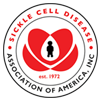Trusted Resources: Evidence & Education
Scientific literature and patient education texts
Culturally competent strategies for recruitment and retention of African American populations into clinical trials
source: Clinical and Translational Science
year: 2015
authors: Jane Otado, John Kwagyan, Diana Edwards, Alice Ukaegbu, Faun Rockcliffe, Nana Osafo
summary/abstract:Purpose: To identify successful recruitment strategies, challenges and best practices for researchers to engage African American communities in clinical studies taken into consideration target participants’ culture and context.
Methods: We reviewed 50 studies conducted from 2001 to 2012 at an inner-city research center to determine the type, duration, anticipated enrollments and actual enrollments. Survey was sent to study coordinators to obtain data on recruitment and retention strategies, challenges and dropout rates. We also interviewed 25 study coordinators on challenges and strategies.
Results: Of the 50 studies, 24 had completed recruitment at the time of this report. The completed studies achieved a median recruitment rate of 88% (range: 50–110). Successful recruitment and retention strategies included: fi eld-based strategy and snowballing. Major barriers were: distrust, compensation, education disadvantage, lack of interest, and inability to have study partner. Strategies to reduce barriers included providing informational sessions, disseminating newsletters about study outcomes. Best practices include being culturally sensitive including demonstrating a caring attitude and being responsive to participants needs.
Conclusions: Cultural competence is critical in order to design and implement successful recruitment strategies in this population. Research teams should consist of multiethnic staff, involve the community, demonstrate trust and deliver concise education of the research endeavor.
organization: Georgetown-Howard Universities Center for Clinical and Translational Science (GHUCCTS), Howard University, College of Medicine, Washington, District of Columbia, USADOI: 10.1111/cts.12285
read more full text
Related Content
-
Comparing Sickle Cell Disease Acute Pain Management in the Pediatric and Adult Emergency DepartmentBackground: Vasoocclusive pain leading ...
-
A Phase 3 Randomized Trial of Voxelotor in Sickle Cell DiseaseBackground: Deoxygenated sickle hemog...
-
Review Board Finds Global Blood’s Sickle Cell Disease Therapy Voxelotor Is SafeAn independent review board has found Gl...
-
Global Blood Therapeutics Receives EMA PRIME Designation for GBT440 for the Treatment of Sickle Cell Disease (SCD)GBT440 is First Potential Treatment for ...
-
ATS Releases Guidelines for Home Oxygen Therapy in Children With Sickle Cell DiseaseThe American Thoracic Society (ATS) rele...
-
New Pre-transplant Treatment Regimen Improves Survival of Kids with Sickle Cell Disease, Trial ShowsA new pre-transplant conditioning regime...
-
4 Transition Stages of Sickle Cell Disease and Tips for Each Stagehttps://www.onescdvoice.com/wp-content/u...
To improve your experience on this site, we use cookies. This includes cookies essential for the basic functioning of our website, cookies for analytics purposes, and cookies enabling us to personalize site content. By clicking on 'Accept' or any content on this site, you agree that cookies can be placed. You may adjust your browser's cookie settings to suit your preferences. More Information
The cookie settings on this website are set to "allow cookies" to give you the best browsing experience possible. If you continue to use this website without changing your cookie settings or you click "Accept" below then you are consenting to this.




 +myBinder
+myBinder
